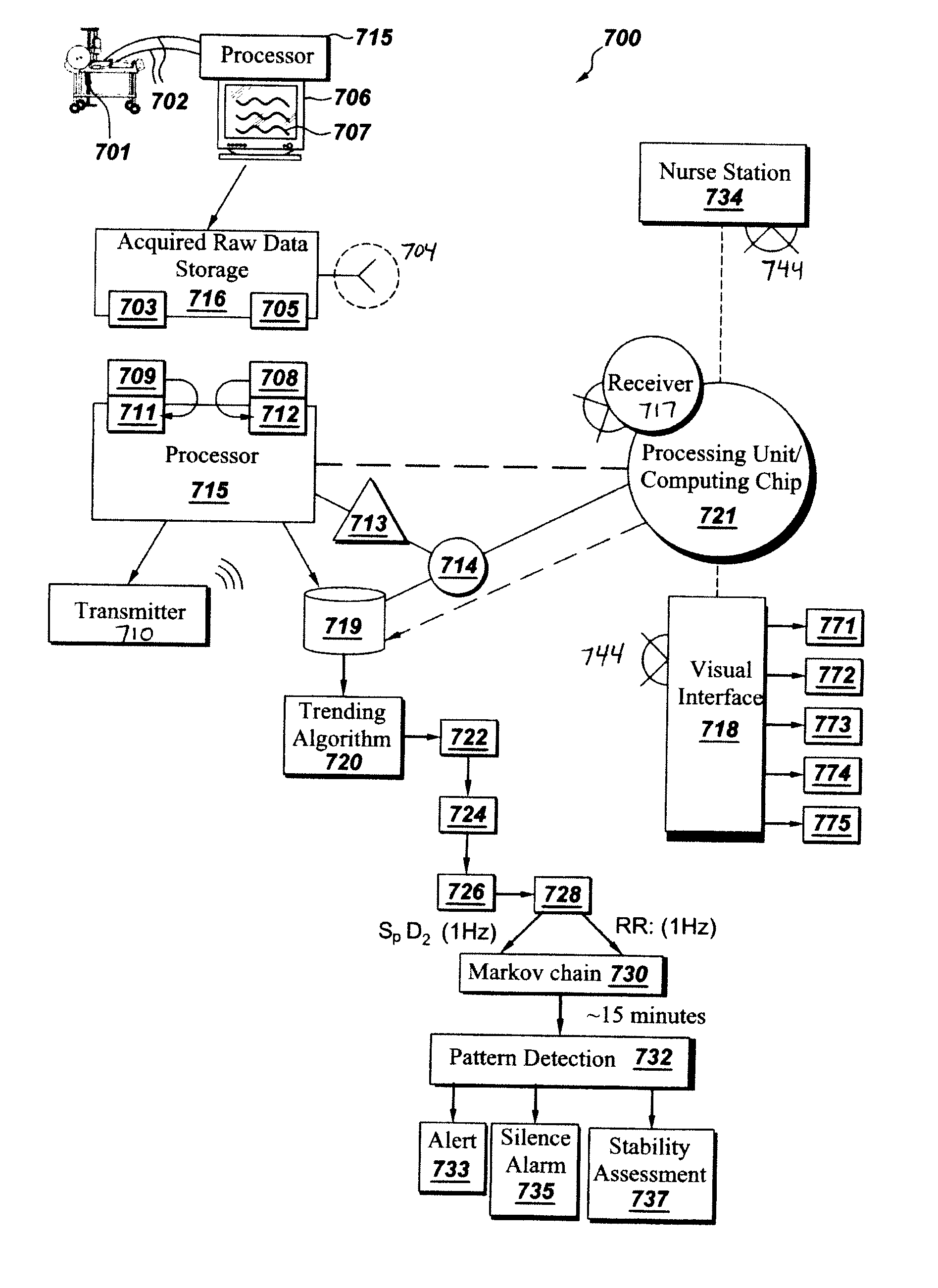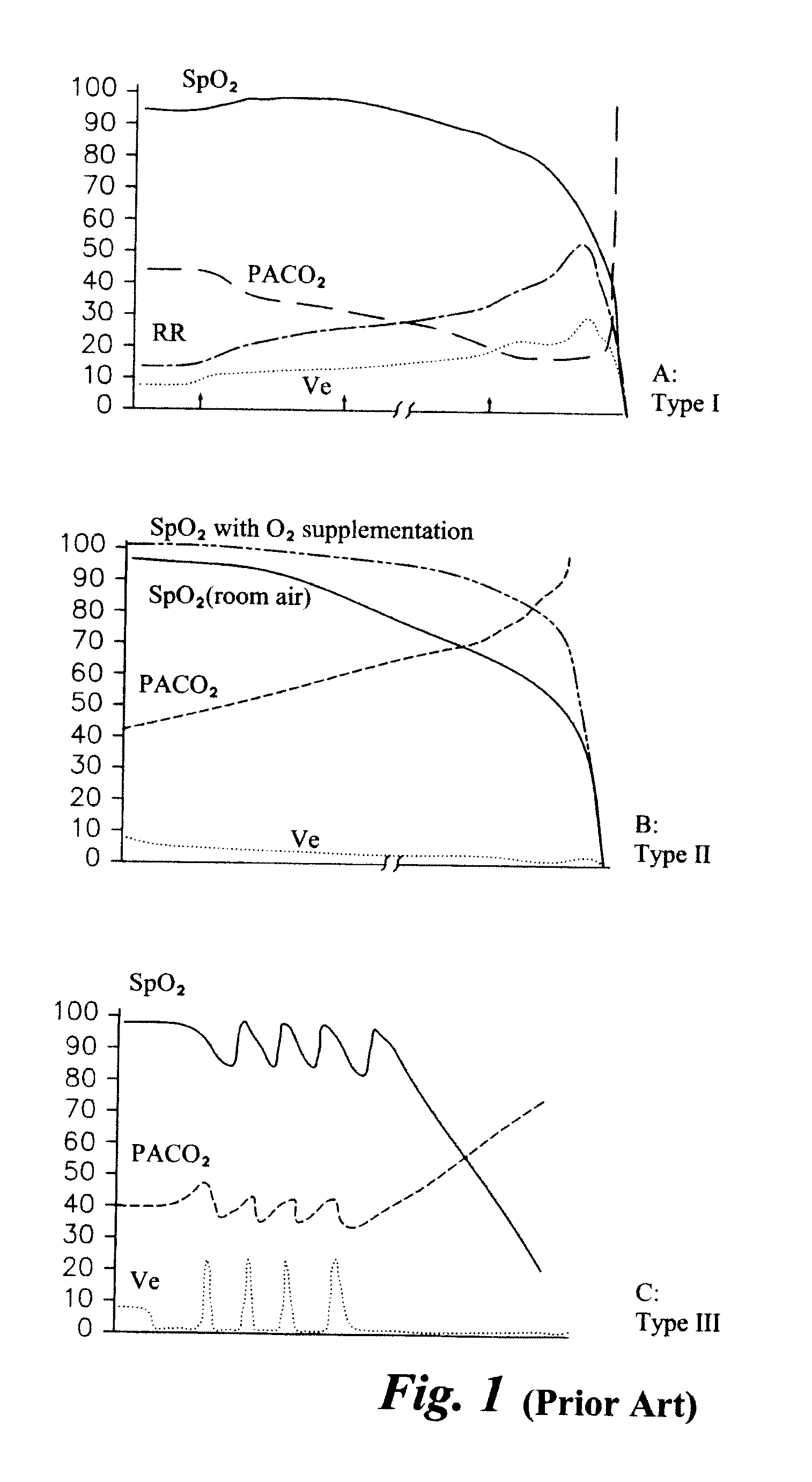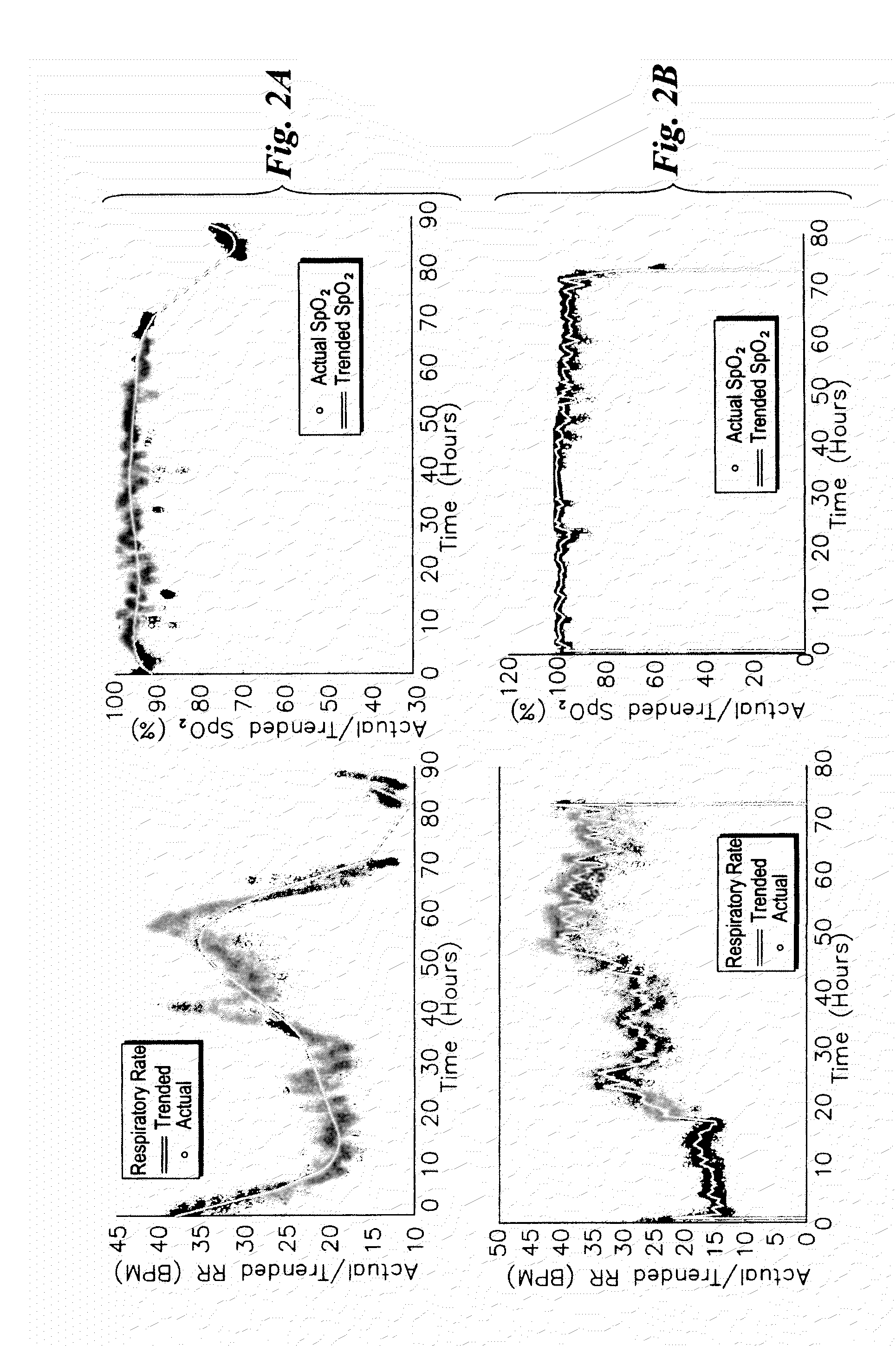Respiratory stress detection
a technology of respiratory distress and detection method, applied in the field of respiratory distress analysis, can solve the problems of lack of system to identify or characterize, failure of current hospital monitoring to identify, and failure to recognize patterns as referenced, so as to improve inform and alert clinicians
- Summary
- Abstract
- Description
- Claims
- Application Information
AI Technical Summary
Benefits of technology
Problems solved by technology
Method used
Image
Examples
Embodiment Construction
[0029]Embodiments are directed to systems and methods of utilizing detection methodologies to identify anomalous observations as based on statistical patterns in collected data to recognize patient distress and trigger an alarm at an early stage of distress.
[0030]In this invention, an algorithm is described to be utilized with systems to detect respiratory rate and SpO2 so that the system quickly identifies the three types of trend patterns based on an analysis of the respiration rate and SpO2 time series. In addition, the algorithm is extended to recognize and detect other instances of respiratory distress by learning prior patterns of patient instability.
[0031]Method
[0032]For exemplary purposes, and not limitation, two different methods to tackle the problem of early detection of respiratory distress are characterized. In the first method, a trending algorithm captures the trends in the SpO2 and RR waveforms. Based on the trend estimates, a scheme is utilized to identify trend pat...
PUM
 Login to View More
Login to View More Abstract
Description
Claims
Application Information
 Login to View More
Login to View More - R&D
- Intellectual Property
- Life Sciences
- Materials
- Tech Scout
- Unparalleled Data Quality
- Higher Quality Content
- 60% Fewer Hallucinations
Browse by: Latest US Patents, China's latest patents, Technical Efficacy Thesaurus, Application Domain, Technology Topic, Popular Technical Reports.
© 2025 PatSnap. All rights reserved.Legal|Privacy policy|Modern Slavery Act Transparency Statement|Sitemap|About US| Contact US: help@patsnap.com



